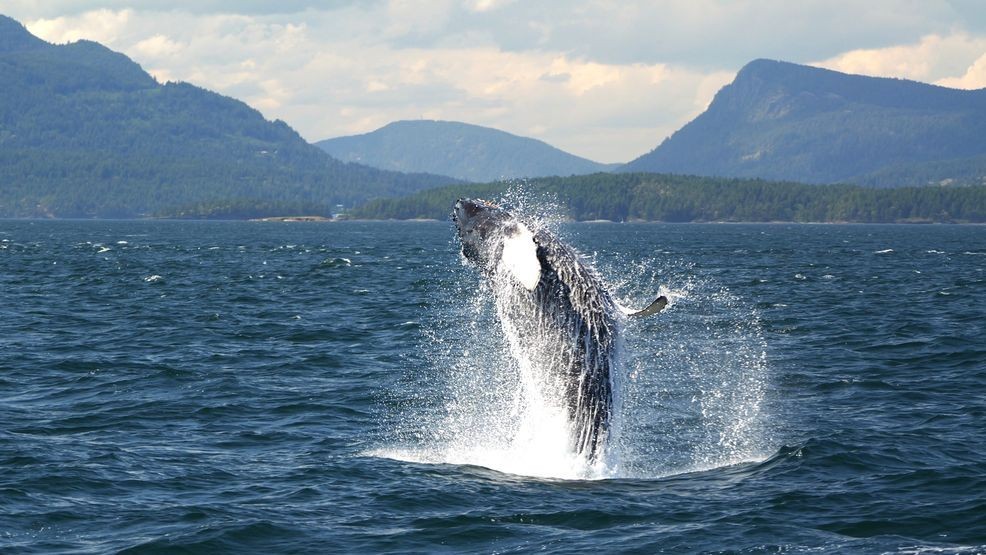SEATTLE — The Pacific Whale Watch Association (PWWA) has announced the arrival of the first humpback whale calf of the 2025 season in the Salish Sea – and the baby’s mother is practically a cetacean superstar!
The calf was seen traveling alongside its mother, BCY0324, a.k.a. “Big Mama,” who is celebrated for her significant role in the recovery of local humpback populations.
PREVIOUS COVERAGE | First humpback whale moms and calves of 2023 spotted in Salish Sea
This marks Big Mama’s eighth known calf over three decades.
The pair was initially spotted by PWWA members on Wednesday afternoon in Haro Strait, located on the US/Canadian border northwest of San Juan Island.
Several additional sightings followed on Thursday. The calf, estimated to be 4-5 months old, remained close to its mother during these encounters.
“We’re always eager to see who the first calf of the season will be,” said Erin Gless, the PWWA’s executive director, in a press release. “And we’re always anxious waiting for Big Mama’s return. This year we got to celebrate both happy occasions at once!”
Humpback calves are not born in the Salish Sea, the PWWA explains. Mothers give birth during the winter in warmer waters off Hawaii, Mexico, and Central America. Big Mama herself belongs to the Hawaiian population.
After a few months, mother and calf embark on a perilous journey north to their feeding grounds, facing threats such as fishing gear, shipping traffic, and killer whales, their natural predators.
Big Mama has successfully navigated this journey many times before.
SEE ALSO | VIDEO: Humpback whale swallows kayaker, spits him out
“Big Mama is a perfect example of how important a single whale can be to a population,” said Gless. “She was first seen in 1997 and was one of the first humpbacks to return to the Salish Sea after the end of commercial whaling in 1966. She’s been returning ever since and now has at least eight calves, seven grandcalves, and four great-grandcalves. It’s very impressive!”
Two of Big Mama’s previous calves, “Divot,” born in 2003, and “Moresby,” born in 2022, have also recently arrived in the Salish Sea for the season.
In the coming weeks, many more humpbacks are expected to return to Washington waters, where they will feed on small fish and krill. Humpbacks typically remain in the area through fall before migrating south for the winter.


